
9 minute read
Cherries and Ferries
blue bay. Pinestead Reef Resort, our home for the night, graces a beach on the bay in Traverse City.
Just about an hour’s drive from Sleeping Bear Dunes National Lakeshore on Lake Michigan, which had been the first stop on our Great
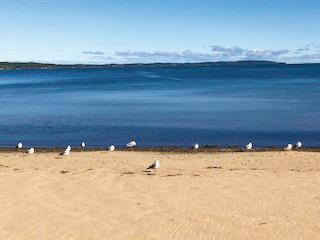
Lakes adventure, we found the lovely Pinestead waterfront condo on Grand Traverse Bay to our liking. We walked the soft golden beach along with the seagulls and watched the denim-blue waves rolling in. The deep bay of Lake Michigan is one of many gouged by glaciers over two million years ago at the same time the Great Lakes were formed. The area is known as the northern lower peninsula of Michigan. The fall temperatures ranged between 60 and 70 degrees during this leg of the journey.
Culture was on our menu for the next day. Our destination was the Dennos Museum Center on the campus of Northwestern Michigan College, located in the Cherry Capital. Considered to be a premier cultural facility in northern Michigan, the museum offers exhibitions and programs in the visual arts, sciences and performing arts and a fascinating gift shop with handmade arts and crafts that include Inuit sculpture, carvings and prints.
According to the Dennos website, the museum’s signature collection is “Inuit art of the Canadian Arctic, one of the largest and most historically complete collections of these distinctive sculptures and prints in the United States.” Of the 3,000-item collection of photography, paintings, sculpture and other works of fine art, more than half of the Dennos’





Cherries and Ferries permanent collection includes pieces by indigenous people of the Great Lakes, Alaska, the Canadian Arctic and other regions of North America. We browsed the dynamic and stunning array of Inuit art: stone, whalebone and wood sculptures of animals and people; mounted animal specimens, including a muskox and a polar bear; woven textiles; stitchery and applique; original and stencil prints; lithographs; paintings ~ watercolors, oils and inks; and drawings. Pieces are rotated in and out throughout the year. The exhibit was accompanied not only by descriptions of each art piece, as would be expected, but by informative signage about the Inuits’ history, landscapes, lifestyles and artistic
8219 Beaver Beck Court
Build your dream home and enjoy all Easton Village has to off er in the 3-bedroom, 2.5 bathroom “Cape” model, conveniently located minutes from downtown Easton and a short drive to St. Michaels This is a fantastic opportunity in a unique coastal community where you can enjoy all of the exceptional amenities - pool, clubhouse, walking trails and water access to the Tred Avon. New Price-Offered at $899,000
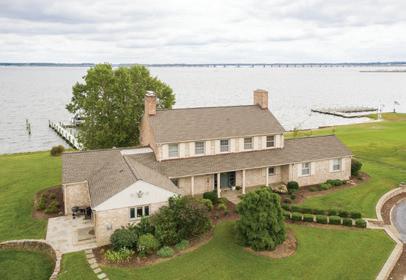

O
Melissa Tippett, Realtor® m +1 410 241 7409 mtippett@ttrsir.com
Easton Brokerage o +1 410 673 3344
Cherries and Ferries Maryland and University of Boston. Her work focuses on contemporary life and human connection. The sculpture totally captures one of our modern primary connectors ~ the ubiquitous cellphone!
We ended our tour with an invitation to view a BBC video about the continuing Tibetan resistance against Chinese control and communism. An accompaniment to a new exhibit of Tibetan and Buddhist art that was opening soon, the docu- inclinations and processes. We found it extremely thought provoking and inspiring.
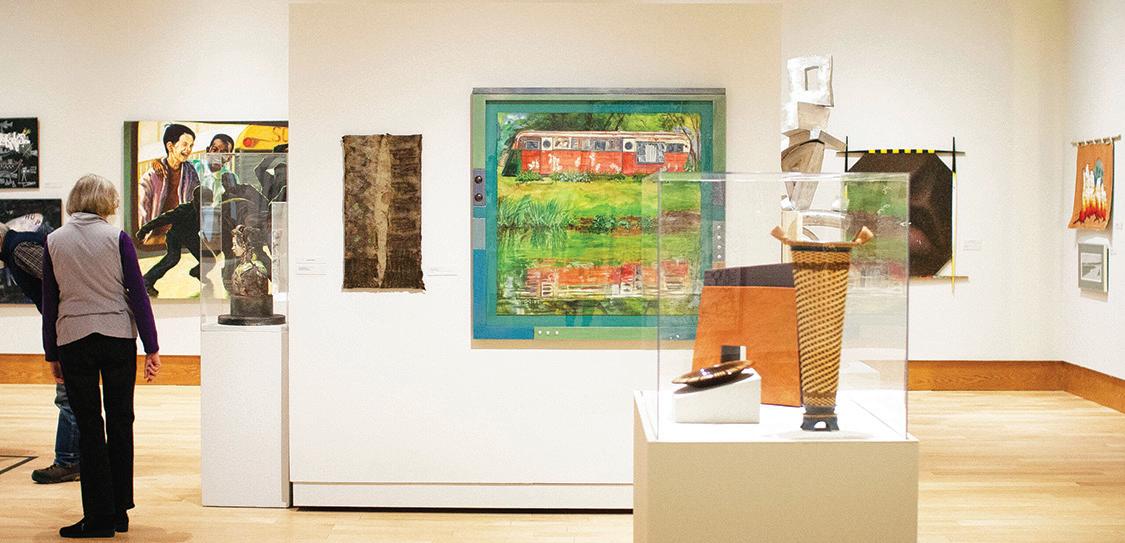
In another exhibit room, we were amused by a modern felt, clay and mixed media sculpture called “Flock,” which depicted six teenagers standing in a group, dressed in fuzzy white wool hoodies and white pants and all looking at their cellphones. Coincidentally, it was created by American artist Pamela DeTuncq, who studied at the University of




Cherries and Ferries
mentary followed the 1950s Dalai Lama’s escape and destruction of Buddhist temples, as well as how the Tibetan resistance fighters were supported by the U.S. via CIA training and arms. China still occupies Tibet, and U.S. support has cooled in order to improve relations with China. Tibetan resisters moved to Nepal, a sad story.

Cherries and Ferries
After purchasing a few items in the Dennos gift shop, including a pair of carved wood earrings shaped like snowflakes, we headed to lunch in downtown Traverse City. The Grand Traverse Pie Company was our destination for award-winning cherry pies, mouthwatering potpies and tasty quiches. My mouth is watering just writing about the scrumptious broccoli and cheddar quiche and another fresh green salad with dried cherries and cherry-based salad dressing that I enjoyed for lunch. We capped off the meal with slices of the Signature Pie of the National Cherry Festival (held annually in Traverse City), their famous Cherry Crumb Pie, both tart and sweet and tasting like “another slice, please.”
The two-hour drive to our next Great Lakes adventure in Mackinaw
City was marked by majestic views of Lake Michigan, quaint towns, marinas, resorts, residences, golf courses and forests ~ a pleasant drive. As cherries are to Traverse City, so is fudge to Mackinaw City and Mackinac Island. The main street of the town was bustling with tourists shopping, dining and buying expensive fudge. In addition to fudge shops, Huron Avenue is lined with candy factories, gift shops, T-shirt shops, taffy shops, etc., much like the boardwalk in Ocean City, Maryland, only without delicious Thrasher’s fries soaked in vinegar and sprinkled with Old Bay.
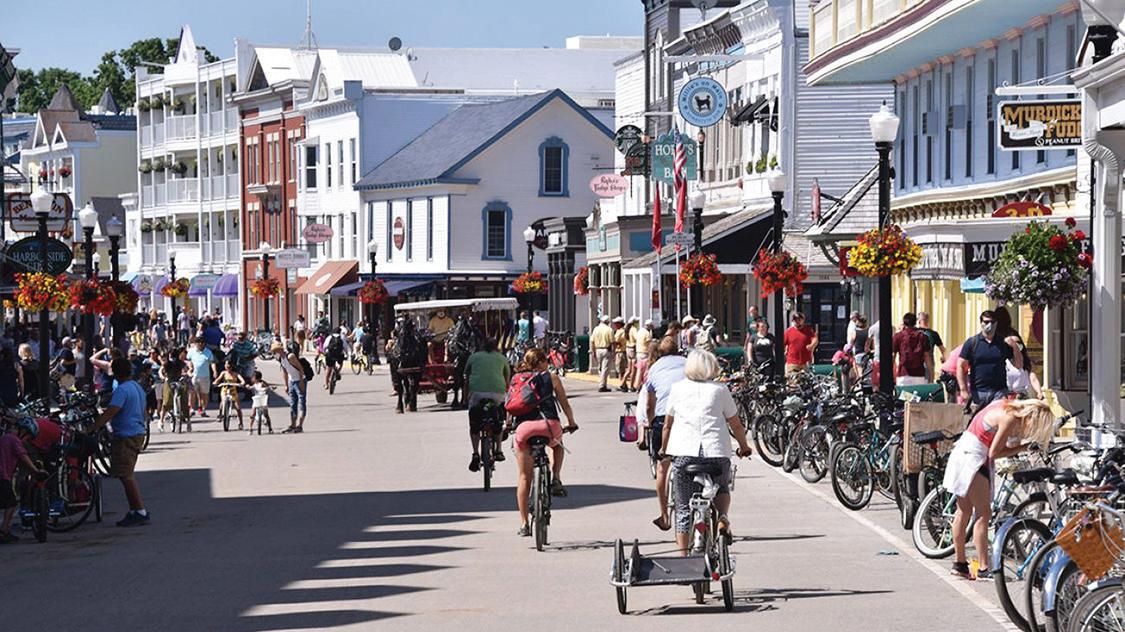

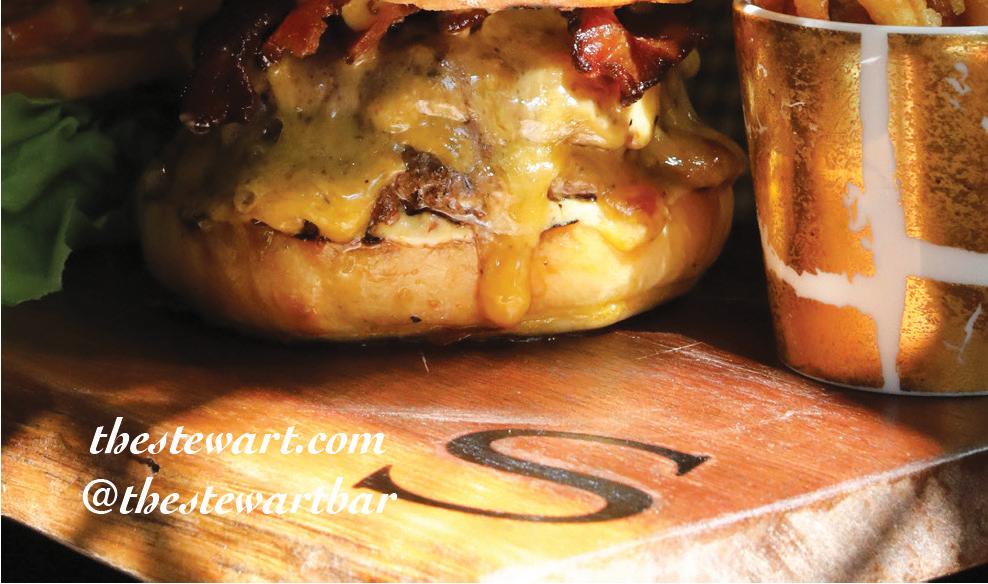
Cherries and Ferries According to many sources, the northern lights are a rare and spectacular natural phenomenon tied to activity of the sun and solar wind. They evolve from electromagnetic storms on the sun. They can appear as soon as 30 to 45 minutes after sunset but are more likely to be seen during the darkest time of night, typically from midnight to 2 a.m., and are not out every night. When conditions are right, a low glow will rise, brighten and burst with ripples, pillars and waves of shimmering light.
Again we stayed on the water in Mackinaw, this time on Lake Huron at the Best Western Plus Dockside Waterfront Inn, with another beach just outside our door to walk and enjoy. I should explain now about the waterfront accommodations and my “aurora” search. Seeing the northern lights, or aurora borealis, has been one of my travel quests for a few years. It is on my bucket list. Whether in Michigan, Wisconsin, Alaska, Canada, Greenland, Iceland or the Nordic countries, it is my hope to see it one day.
As we were making arrangements for our Great Lakes exploration, the northern lights were visible in northern Michigan due to solar activity. I suggested that we book north-facing waterfront properties with hopes of seeing the aurora from our room rather than having to drive to a waterfront dark sky spot in the middle of the night when they are most visible. Thus, we reserved all waterfront properties with beautiful water and night sky views.
Unfortunately, aurora predictions usually come only a day or two in advance of their occurrence, so it is difficult to plan ahead or travel to see the lights. Spring and fall in northern areas of the world seem to provide the best viewing opportunities. The northern lights have been seen over Traverse City and Mackinaw City. I was hopeful, but clouds, rain and weak solar activity doomed our chances at both locations.
To learn more about the phenomenon, we drove the next day to the nearby Headlands International Dark Sky Park, two miles west of
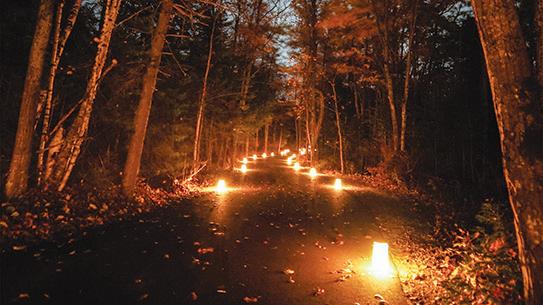


Cherries and Ferries

Mackinaw City. The 550-acre county park preserves over two miles of undeveloped shoreline on Lake Michigan and was designated an International Dark Sky Park in 2011, meaning an area of land protected from light pollution. The park’s hiking trails travel through woodlands and past lush ferns and beautiful wildflowers. Signage informs visitors about astronomy, dark sky protocols and Native Americans of Northern Michigan.
The Waterfront Event Center includes an information center where a knowledgeable specialist shared information about the Headlands programs, along with dark star-filled sky and aurora viewing opportuni- ties. She shared two iPhone apps that predict where auroras can be viewed around the world and statistics on chances to view at the viewer’s location, which was practically zero for us. I appreciated accessing this information, which helped temper my expectations and hopes and will help with planning future trips. The apps are Space Weather Live and My Aurora Forecast and Alerts.
The park is open 24/7, and admission is free. This gem also includes an amphitheater in front of the center from which to view the night sky in comfort. We enjoyed a stroll along the Lake Michigan shoreline before returning to Mackinaw City for dinner at Dixie Saloon and Brewery and sipping a Michigan Cherry Wheat Ale while savoring Sriracha Chicken with Bacon Mac ’n Cheese, spicy comfort food for a chilly, dreary day.
After watching magnificent fi reworks over Lake Huron from our room, we readied ourselves for the next day’s journey to Mackinac Island via Shepler’s Mackinac Island Ferry. We chose the longer “Mighty Mac” ferry ride of approximately 30 minutes, which includes traveling under the Mackinac Bridge and narration from the captain about the bridge and the island.
We carried weather protection aboard the enclosed ferry early in the morning, as more rain was predicted (and did occur). We learned that “Mackinac” and “Mackinaw” are both pronounced the same way, with the “ac” sound at the end.
The captain said that the five-mile suspension bridge, opened in 1957, is Michigan’s most iconic structure. It is the longest suspension bridge in the western hemisphere and the world’s fi fth largest. We would travel the bridge on the next leg of our trip from Michigan’s Lower Peninsula to St. Ignace on the Upper Peninsula.
We were ferrying through the turbulent area known as the Mackinac Straits, rich in maritime history and with a famous group of 22 lighthouses to stand watch all the way through. The straits over which the bridge “watches” is a channel connecting Lake Michigan (west) from Lake Huron (east), and it separates Michigan’s upper and lower peninsulas. Many a ship has been lost in
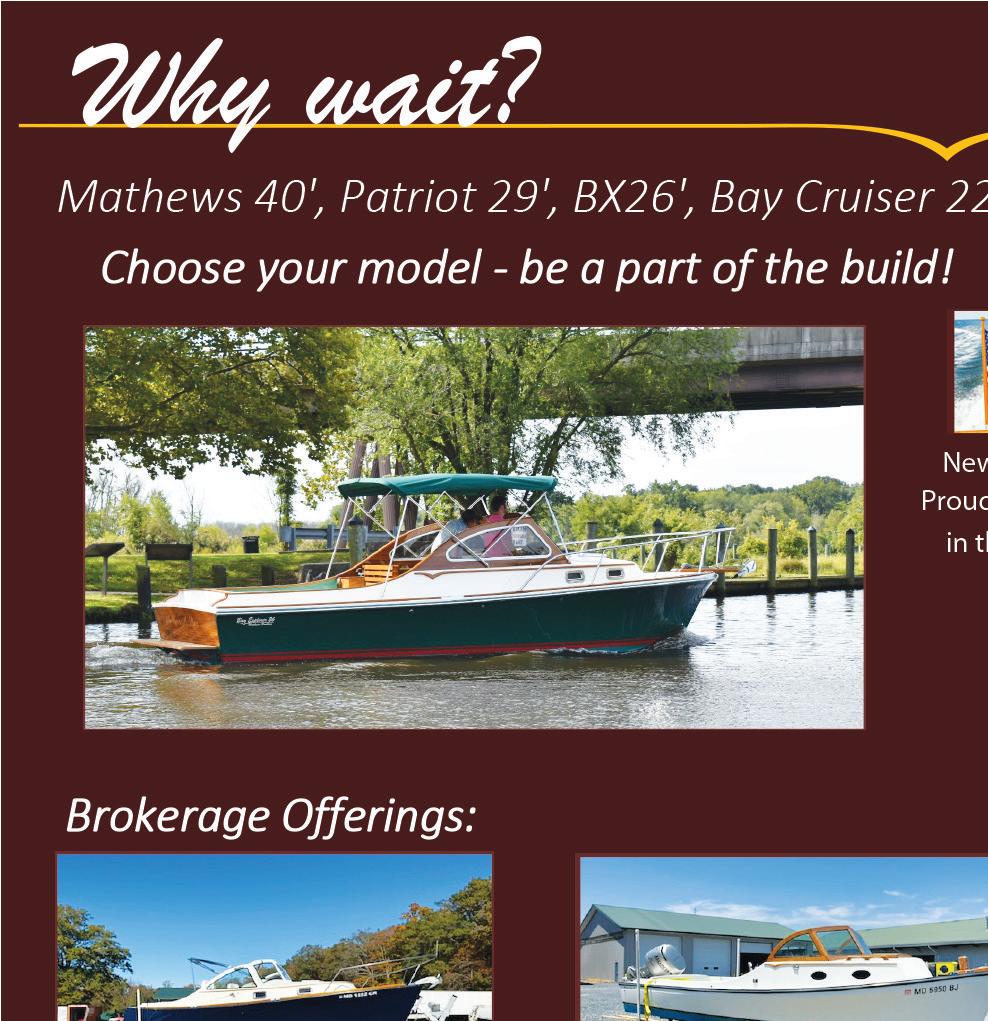

TIDE TABLE OXFORD, MD FEBRUARY 2023
SHARP’S IS. LIGHT: 46 minutes before Oxford
TILGHMAN: Dogwood Harbor same as Oxford
EASTON POINT: 5 minutes after Oxford
CAMBRIDGE: 10 minutes after Oxford
CLAIBORNE: 25 minutes after Oxford
ST. MICHAELS MILES R.: 47 min. after Oxford
WYE LANDING: 1 hr. after Oxford
ANNAPOLIS: 1 hr., 29 min. after Oxford
KENT NARROWS: 1 hr., 29 min. after Oxford

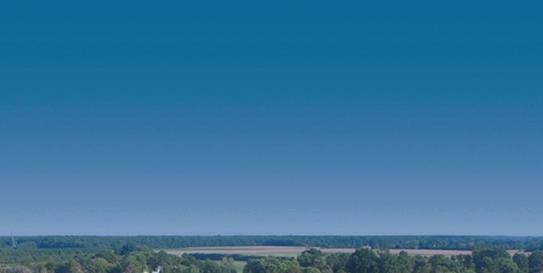
CENTREVILLE LANDING: 2 hrs. after Oxford
CHESTERTOWN: 3 hrs., 44 min. after Oxford
3 month tides at www.tidewatertimes.com
Cherries and Ferries the numerous shoals and shallows left behind in the straits when the glaciers retreated.
Called the “Jewel of the Great Lakes,” Mackinac Island has been receiving visitors for centuries. The national treasure is famous for its horse-drawn carriages, the only means of transportation besides bicycles on the island, cars having been banned since 1898. It is also home to Fort Mackinac (established in 1780), incredible natural landmarks, lovely accommodations, remarkable sunrises and sunsets, shopping, dining and, of course, fudge.
On our ride, we learned from the carriage driver’s narration that Mackinac Island was formed around 13,000 B.C. when the glaciers gouged, retreated and melted to form the Great Lakes. The island was the second national park to be established in the U.S., just three years after Yellowstone! The Grand Hotel has the world’s largest porch (660 feet), which non-guests can stroll for $10.
The island comprises 3.8 square miles of land, mostly of limestone, and an 8.2-mile “highway” used by carriages and bikes, including the roughly 1,500 bikes available for rent. Its airport is used year-round. Mackinac Island also imports 10 tons of sugar each week in season to make its famous and expensive fudge.

After disembarking, we strolled through town to our horse and carriage for an exploration of the island with several stops along the way. The rain limited the full, joyful experience, but we did see the iconic Grand Hotel and Fort Mackinac as well as the natural limestone wonder of Arch Rock. Frequent stops at carriage houses allowed for restroom, beverage, snack and shopping opportunities.
My husband, John, was interested to learn from our driver that the carriage drivers, horses and most shop employees are seasonal workers. Approximately 500 island residents and 600 draft horses transport visitors in season. In winter, the horses are ferried off the island to spend their winter vacation in Michigan’s Upper Peninsula pastures. They work six months on, six months off. A few businesses and lodgings remain open in winter, and bikes are replaced with snowmobiles.


The rain had tapered off by the end of our carriage ride, so we wandered down the main street on the way to the ferry dock. The ferry ride back to Mackinaw City was smooth, and we found an old-world Italian restaurant, Nonna Lisa’s, to celebrate our last night in the area. In an atmospheric rustic lodge with hand-carved fixtures that looked like trees, we relaxed with glasses of Malbec from a Traverse City winery and talked about our plans to cross the Mackinac Bridge to the Upper Peninsula the next day for more Great Lakes adventures. a
















